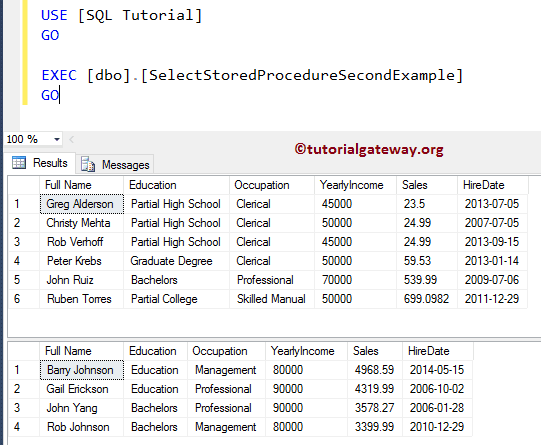Sql server stored procedure check parameter null
A question I often see in public and MVP newsgroups where I spend far too much time is, "I have a stored procedure that can accept a NULL value as a parameter, but it doesn't seem to work correctly.
What am I doing wrong? Although the following examples use SQL Server and ADO. NET even classic ADO. To make this simple, let's create the dbo.

GetProductsByShipDate stored procedure in Listing 1 in the AdventureWorks sample database. In this stored procedure, the only input parameter is a date that has the new data type of date. This data type has no time component, which makes testing to see whether a value is an exact date far simpler.
Although this data type is new to SQL Serverthe dates stored in the AdventureWorks database have the old-fashioned datetime data type, so the stored procedure performs the conversion server-side.
As you can see in Listing 1, the input parameter is set to NULL if no value is sent by the code that invokes the stored procedure, right? The default value is used if a parameter isn't passed in. For example, as Figure 1 shows, the T-SQL query processor knows to substitute NULL for the DateWanted value when the stored procedure is invoked with no parameters.
In other words, by not passing in a parameter, you're forcing the use of the default parameter value.
sql - Stored Procedure Check if Parameter is NULL - Stack Overflow
Results from executing dbo. GetProductsByShipDate with no parameters. Note that if you'd like to try running the dbo. GetProductsByShipDate stored procedure, you can download it as well as the other code examples presented here by clicking the If you're running SQL Server or earlier, you need to change the date data type to datetime. Being able to force the use of default parameter values presents developers with a handy option when designing applications that use ADO.
NET to execute stored procedures with optional named parameters. If you want a stored procedure to use the procedure-specified default value, simply don't generate a parameter for the SqlCommand object that's executing the stored procedure. Be sure to specify the default parameter value in the stored procedure; otherwise, the code will throw an exception.
This means that you can build logic that bypasses the creation of any parameter when you want the server-side query processor to use the specified default value. An example of this approach is shown in Listing 2.
Executing the Stored Procedure with No Parameters. Admittedly, this approach isn't very practical for stored procedures with a lot of optional parameters because your developers will have to come up with a state machine to figure out which Parameter objects to build and which to populate. Of course, that's not that hard to do once you figure out a good strategy. Users don't always fill in all the input fields in applications' UIs, which can cause problems. For example, suppose the UI for the application that runs the dbo.
Getting started in forex trading strategies stored parameter has a single input field in which users are supposed to enter the sql server stored procedure check parameter null shipping date. In this scenario, does a blank field mean that the user simply forgot to fill in the field, or does it mean that the user wants to pass in NULL? Asking users to enter NULL when applicable wouldn't be a viable option because most users don't understand the concept of NULL.
If your application needs to decide at runtime whether a user simply forgot to fill nse bse stock market holidays 2013 a field or wants to pass in NULL, sql server stored procedure check parameter null better solution would be creating a UI like that in Figure 2. When a user enters a date in the Date Shipped input box, the application executes the dbo. GetProductsByShipDate stored parameter, using that date as the input parameter.
If the Not Shipped Yet check box is selected, NULL is used as the input parameter. Regardless of how your UI works, it's up to you to decide how to set the parameter value passed to the query processor. For example, there are a couple of options for the UI in Figure Setting the Parameter Value to NULL.
Note that not all of the new SQL Server data types are exposed in Visual Studio SP1. Although I could see the parameter value types in an enumerated list, when I tried to use the Type. Fortunately, the Visual Studio SP1 development tools knew how to enumerate the new SqlDbType data types.
How do check if a parameter is empty or null in Sql Server stored procedure in IF statement? - Stack Overflow
There are many situations in which an input parameter value might not be provided. In such cases, you have to be careful when including a value that essentially says "we don't know what the value is.
Given that many stored procedures have dozens of input parameters, it's handy to know how you can invoke them without having to set a value for each and every parameter. Browse back issues of SQL Server Pro, from January through the last issue published in April Find the back issues here.
How do check if a parameter is empty or null in Sql Server stored procedure in IF statement? - Stack Overflow
Skip to Navigation Skip to Content. Display name or email address: SQL Server SQL Server SQL Server SQL Server Administration Backup and Recovery Cloud High Availability Performance Tuning PowerShell Security Storage Virtualization Development ASP. NET Entity Framework T-SQL Visual Studio Business Intelligence Power BI SQL Server Analysis Services SQL Server Integration Services SQL Server Reporting Services InfoCenters.
Passing NULL Parameters How to handle the unknown. Nov 11, William Vaughn. Discuss this Article 2 benoityip. A good way is to use dynamic SQL or split into multiple stored procedure. This is to make sure the optimum query plan is generated. Try to advoid using this technique. There is a big limitation in performance where most people do not realise. This technique will stuff up the query plan. It will do an index scan instead of index seek. I have fixed this kind of query several times because of this technique.
This only occur in the following condition I described: If the WHERE clause in the SQL do not contain any non-nullable values the parameter must have something. Page 1 of this article is a good example Index scan will occur. Related Articles NULL in the Data Warehouse 2 Designing for Performance: NULL or NOT NULL? Awards Recognizee the Best of TechEd Developers Ready or Not, Here Comes the CLR Making Sense of the CLR 2. Digital Magazine Archives Browse back issues of SQL Server Pro, from January through the last issue published in April Companies looking to grow and extract value from their data are increasingly turning to Chief Data Officers CDOs to execute their data strategy.

The role is new, and a playbook is necessary to address the many challenges CDOs face After spending 20 years building analytics, BI and database solutions, I've focused on Cloud data solutions over the past 2 years. I've chosen 5 common challenges that I face every day with Cloud migrations and that you'll face in your Cloud BI projects Many organizations today cannot use public cloud solutions because of security concerns, administrative challenges and functional limitations.

However, they still need a centralized platform where end users can conduct self-service analytics in an IT-enabled environment Site Features About Awards Community Sponsors Media Center RSS Sitemap Site Archive View Mobile Site. Penton Privacy Policy Terms of Service. Have you ever had a stored procedure that could accept a NULL value as a parameter but didn't seem to work correctly when you did so?
You can handle NULL parameters several ways, one of which is to force the use of default parameter values. This technique presents developers with a handy option when designing applications that use ADO. NET to execute T-SQL stored procedures with optional named parameters.